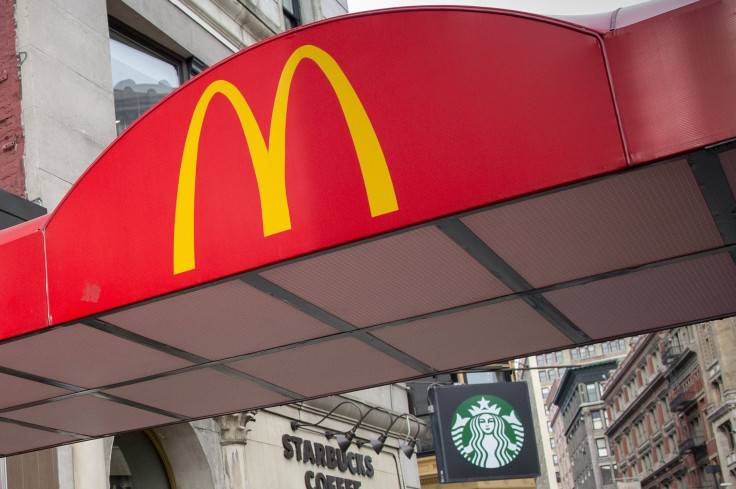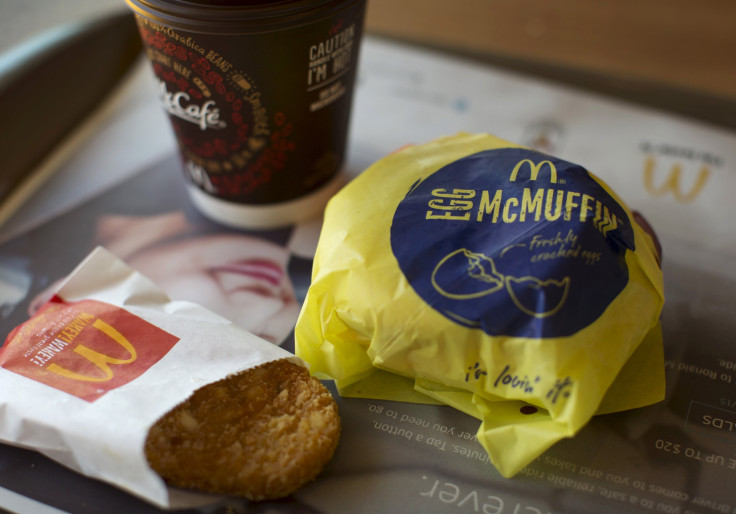McDonald’s Corporation (MCD) Q1 2016: 5 Reasons Earnings, Revenue Beat Expectations Under CEO Steve Easterbrook

McDonald's is still tweaking its recipe for success, but it's looking like Steve Easterbrook was the right chief executive to oversee the process.
The fast-food company reported first-quarter earnings Friday of $1.23 per share on revenue of $5.9 billion that beat analysts' expectations of $1.16 per share on revenue of $5.83 billion — welcome news for a company that in recent years has battled a sales slump and struggled to hold on to customers and revamp its image from unhealthy to "fresh" amid a growing movement toward fast-casual chains.
Easterbrook was brought over from the U.K. in 2015, more or less to save McDonald's. He started in March 2015 "with the goal of revitalizing McDonald’s as a modern, progressive burger company, delivering a contemporary customer experience," according to his company biography. A year in, something seems to be working.
"I'm pleased to report that our turnaround is taking hold," Easterbrook said in a statement Friday. "The ongoing investments we're making in running great restaurants and delivering what matters most to our customers are beginning to yield sustained positive results," he said, pointing to increased revenues and gains in market share.
What are those investments, how are they paying off and what does the future hold? Here are five strategies that are helping the McDonald's ship slowly turn around.
1) Diving into countries like China and Russia: Both of these countries are deemed high-growth markets. In the first quarter, sales in China saw 7.2 percent year-on-year growth, “despite persistently challenging macroeconomic conditions,” Easterbrook said in an earnings call Friday. "China is a wonderful opportunity," he added.
McDonald's has plans to add 1,500 restaurants in China, Hong Kong and Korea over next five years, on top of the existing 2,800. Of those, 1,000 are located in China, where tailored menus with items like Spicy Pork McBites have helped the fast-food chain catch on.
The company announced in January that it would open 60 new restaurants in Russia in 2016, bringing the total to 543 Russian locations. But Easterbrook said that the company was bracing for "decreased consumer purchasing power" as the economy there struggles with to economic sanctions and the low price of oil.
Is it a red bun!? McDonald's China latest promo is an Angry Birds Movie tie-in... pic.twitter.com/CioGlaVruZ
— Burger Lad® (@Burger_Lad) April 22, 2016
2) Trimming fat (not literally): Last year, McDonald's closed 700 "underperforming" locations across the world, including in China. In the U.S., it closed more restaurants than it opened in 2015, the first time the company's restaurants dropped in number since 1970.
Easterbrook said Friday that those "directly contributed" to better financial performance for the company.
3) A fuller menu: McDonald's rolled out its all-day breakfast menu in October, a move that proved to be a serious tailwind to sales, Easterbrook said Friday.
When customers gained daylong access to Egg McMuffins and other highly popular foods (although some criticized the restaurant for misleading customers, pointing out that not all restaurants offered a full breakfast menu all day), that also meant they had a broader array of prices that fit their budgets.
"All-day breakfast fills a price gap in the menu," Easterbrook said. "This platform remains a significant contributor to top-line results," and the company planned to expand it, he said.

4) Keeping the customer satisfied: McDonald's is so focused on customer satisfaction that the company is paying attention to the font size on receipts so that it gets special orders right, Easterbrook told analysts Friday. That attention to detail had improved customer satisfaction scores by 6 percent compared with last year, he added.
It also rolled out initiatives like a new mobile app and table service that Easterbrook described as "providing customers with more flexibility."
5) Keeping the employee satisfied, too: In an effort to reduce turnover and associated expenses, Easterbrook said that McDonald's was aiming to increase benefits for employees and improve training and management.
McDonald's had a new teaching approach for shift managers that emphasized leadership, he said, that would teach them how to "motivate" crew members and create a "better customer experience."
In April 2015, the company began offering tuition assistance for college courses, dubbed Archways to Opportunity (this being separate from McDonald's own corporate management school, Hamburger University), Easterbrook pointed out, because happier employees made for happier customers.
Of course, these glowing reports about the company's turnaround always leave ample room for skepticism. Case in point: According to McDonald's, more than 5,000 employees have enrolled in the program. How does that translate on the ground? In the company's own words, it means that one out of every three McDonald's restaurants in the U.S. has one employee in an Archways program.
© Copyright IBTimes 2024. All rights reserved.





















